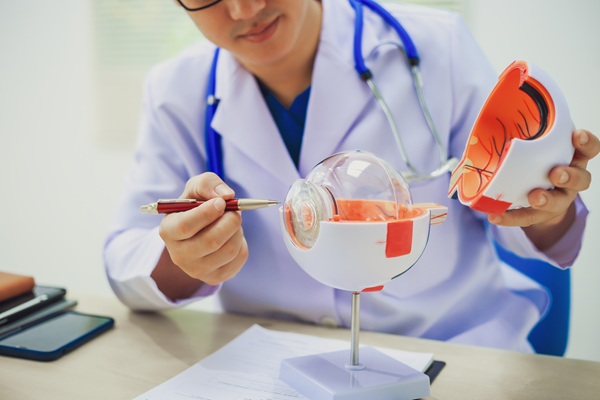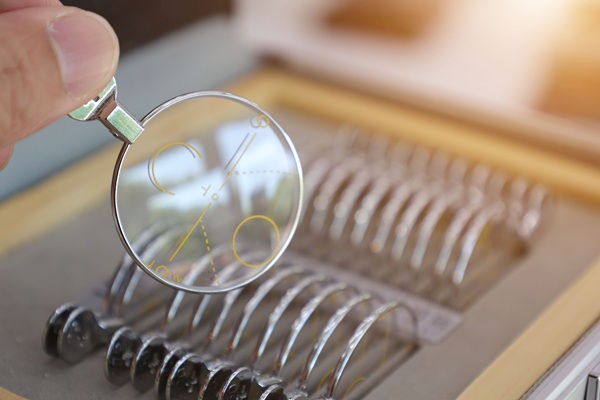What to Expect During and After a Diabetic Eye Exam

A diabetic eye exam is important for spotting and managing vision problems linked to diabetes. Regular eye exams help prevent issues like diabetic retinopathy, macular edema, and permanent vision loss. Understanding what happens during and after a diabetic eye exam can ease concerns and encourage better eye care for people with diabetes.
The importance of a diabetic eye exam
The main goal of a diabetic eye exam is to identify changes in the eyes caused by high blood sugar levels. Diabetes can damage the blood vessels in the retina, leading to the conditions diabetic retinopathy and diabetic macular edema (DME).
Diabetic retinopathy
This condition occurs when the blood vessels inside the eye begin to leak blood and fluid into the retina, causing damage and permanent vision loss.
Diabetic macular edema (DME)
DME is a complication of diabetic retinopathy. It occurs when the macula, which is the center of the retina, begins to swell, damaging blood vessels and causing them to leak.
Optometrists recommend annual diabetic eye exams for anyone diagnosed with type 1 or type 2 diabetes. These exams allow early detection and treatment, which are critical in preserving the patient's long-term vision health and overall wellness.
Preparing for the exam: initial consultation and medical history
Before beginning the physical portion of the diabetic eye exam, the eye care provider typically reviews the individual's medical history. This includes when the patient was diagnosed with diabetes, their blood sugar control levels (such as A1C readings), and any previous eye conditions or symptoms experienced.
The optometrist will ask about the patient's current medications, overall health, and any changes in their vision, such as blurriness, floaters, or difficulty seeing at night. This step helps guide the exam and determine any areas of concern that require close attention.
During the exam: procedures and diagnostic tests
A comprehensive diabetic eye exam consists of several diagnostic procedures designed to detect diabetes-related damage to the eyes. These tests are relatively painless. However, it may cause temporary sensitivity to light in some patients due to pupil dilation. The following are standard components of the exam:
Visual acuity test
This test measures the ability to see at various distances using an eye chart. It helps determine if the patient needs prescription glasses or if other visual aids are needed. If the patient already has corrective lenses or contacts, the optometrist may recommend a stronger lens prescription.
Dilated eye examination
Eye drops dilate the pupils, allowing a better view of the retina and optic nerve. After dilating the pupils, the optometrist uses a special magnifying lens to examine the internal structures of the eye for signs of diabetic damage, such as leaking blood vessels, swelling, or abnormal growths.
Retinal imaging
Advanced imaging techniques such as optical coherence tomography (OCT) or fundus photography can help capture detailed images of the retina. These images allow for precise evaluation of changes in the retinal structure and can track disease progression over time.
Tonometry
This test measures the pressure inside the eye. Measuring ocular pressure is important in detecting glaucoma. This condition can co-occur with diabetic eye complications and lead to permanent vision damage or blindness when left untreated.
After the exam: follow-up recommendations
Following a diabetic eye exam, the patient's vision may remain blurry and sensitive to light for several hours due to the dilating eye drops. The optometrist will typically recommend wearing sunglasses immediately after the exam. These can reduce the patient's discomfort as the effects of the drops wear off.
The optometrist will also explain their findings during the exam and offer guidance based on the results. If they found signs of diabetic retinopathy or other complications, they may recommend further testing or treatment options. These can include laser treatment, injections, or referrals to retinal specialists for more advanced care.
In cases where the provider found no significant damage, they may recommend continuing routine annual exams. They will also recommend that the patient maintain optimal blood sugar control and blood pressure to protect their vision and overall health.
Schedule a diabetic eye exam at our Dallas office
A diabetic eye exam is an essential part of managing diabetes. These routine appointments help protect your vision in a simple, non-invasive way, giving you the tools you need to preserve your long-term vision and improve your overall health. Call our Dallas office today to learn more about the diabetic exam process or to schedule an appointment.
Request an appointment here: https://www.texasoptical.net or call Texas Optical at (214) 771-7333 for an appointment in our Dallas office.
Check out what others are saying about our services on Yelp: Read our Yelp reviews.
Recent Posts
Progressive lenses offer clear vision at near, arm's length, and far distances without the visible lines found in bifocals. They provide a smooth change in power from top to bottom, which means the eyes can focus comfortably throughout the day. With the right fit and guidance from an optometrist, progressive lenses help reduce eye strain…
Prescription contacts provide a convenient and effective way to correct vision, offering freedom from glasses. For patients considering this option, understanding the fitting process, proper care, and comfort techniques can help ensure long-term success. A first-time wearer can expect guidance from an optometrist at every step, with adjustments designed to create a safe and comfortable…
Digital screens have become an essential part of modern life, making blue light glasses increasingly popular as a solution for eye strain and long-term visual health. These specialized lenses filter harmful blue light emitted from computers, smartphones, and tablets. As digital usage continues to rise, understanding the benefits of blue light glasses can help promote…
Prescription glasses are an essential part of daily life for many individuals, providing clear vision to move about safely and confidently. Unfortunately, accidents can happen, and glasses can be damaged through falls, sitting on them, forceful impacts, or accidental drops. Knowing what to do when this occurs is crucial to minimizing the impact on your…


